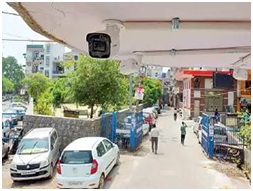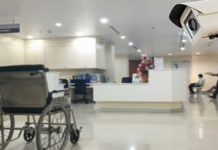The Delhi government has started the second phase of its project to install 280,000 CCTV cameras across the national capital, senior officials involved in the project said on Monday. Along with the CCTV cameras, the government is also installing Wi-Fi routers at the same spots for providing people with internet connectivity, the officials said.
In the second phase, the government will install an additional 140,000 cameras at both residential and market places that have not been covered so far. The entire project will be completed in six months to a year, depending on the Covid-19 situation, officials said.
The project is being carried out by the government’s public works department (PWD). The first phase of the project kicked off in June 2019 and about 140,000 cameras were installed in that phase.
“Due to the Covid-19 pandemic, especially the back-to-back Covid-19 waves that Delhi witnessed, the launch of the second phase of our CCTV project kept getting delayed. Tenders and everything else were done, still it could not take off due to restrictions on non-Covid projects. Now that the ban has been lifted, we have started the second phase of the CCTV camera project wherein another 1.4 lakh (140,000) surveillance devices will be installed on the recommendations of the MLAs,” said a senior government official involved in the project, asking not to be named.
Delhi currently has approximately 236,000 CCTV cameras of which 140,000 are of the PWD while the remaining have either been installed by the Delhi Police or the MLAs using their local area development funds. Of the 70 assembly constituencies in Delhi, the New Delhi constituency, whose MLA is chief minister Arvind Kejriwal, has the highest number of CCTV cameras at approximately 4,000, government data showed.
Along with the CCTV systems, the government is also setting up Wi-Fi networks and around 35,000 Wi-Fi routers will be installed along with cameras in the second phase. PWD officials said for every four cameras, there will be a utility box with an NVR (network video recorder), a Wi-Fi router, a UPS for power backup lasting an hour, and a SIM card to locate the cameras and for network connectivity.
People who will be allowed access to the live camera feed include one resident welfare association member, PWD officials, Delhi Police and a representative of the company that is installing and maintaining these cameras. To protect the cameras from damage, theft and prevent changes in the set angle, the cameras will be put in cages.
Besides, the cameras have at least five types of notification system. “The cameras can also send an alarm to the common control room whenever its angle is fiddled with; there is a power failure; the camera is covered or damaged; or there is a perimeter defying movement in high security areas,” a second official said, also on condition of anonymity.
The PWD is operating a central command and control centre on the 11th floor of its headquarters at ITO where a specialised team of officials will monitor the live feed round the clock.








